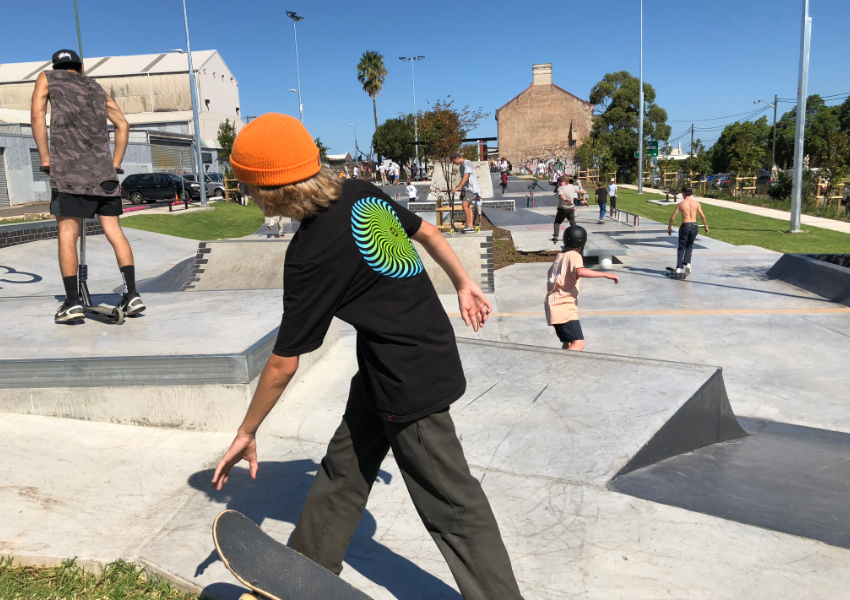
Waterloo Sunset

Image: Plans for a Leichhardt skate park have been supported by the Greater Sydney Parklands Trust. Photo: Supplied.



 Dauth has over 100,000 followers and it climbs sharply afterwards to nearer 200,000 after the incident in 2017. One of the videos I like most shows him sedately wheeling a shopping trolley and tipping it on its side on a railway overpass. He’s hurt his shin and can’t do any riding. Instead, Dauth sits on the metal frame of the overturned trolley and talks about why he shifted away from competing on skateboards back to becoming a pro-scooter rider. It’s an unusual choice. Kids usually graduate from scooters to skateboards. What intrigues me most are the physical details in the video: the trolley, the train overpass location, the everyday urban textures a rider knows.
Dauth has over 100,000 followers and it climbs sharply afterwards to nearer 200,000 after the incident in 2017. One of the videos I like most shows him sedately wheeling a shopping trolley and tipping it on its side on a railway overpass. He’s hurt his shin and can’t do any riding. Instead, Dauth sits on the metal frame of the overturned trolley and talks about why he shifted away from competing on skateboards back to becoming a pro-scooter rider. It’s an unusual choice. Kids usually graduate from scooters to skateboards. What intrigues me most are the physical details in the video: the trolley, the train overpass location, the everyday urban textures a rider knows.  In the lead-up to skateboarding being included as a sport for the first time ever at the Olympics this year, I will see documentaries from the USA, the UK and Australia that all focus on leading female figures like Australia’s own Poppy Starr Olsen. But the street truth is that 95% of the riders I ever see in the parks are male and young, with a few die-hards that give off a tragic war veteran air. It sets me thinking about the conversations around ‘toxic masculinity’. And how unwanted young males are as a species in public: a problem to be solved… wherever they go, whatever they do.
In the lead-up to skateboarding being included as a sport for the first time ever at the Olympics this year, I will see documentaries from the USA, the UK and Australia that all focus on leading female figures like Australia’s own Poppy Starr Olsen. But the street truth is that 95% of the riders I ever see in the parks are male and young, with a few die-hards that give off a tragic war veteran air. It sets me thinking about the conversations around ‘toxic masculinity’. And how unwanted young males are as a species in public: a problem to be solved… wherever they go, whatever they do.